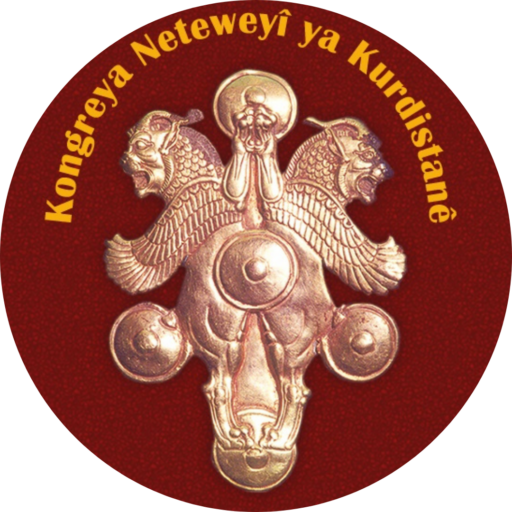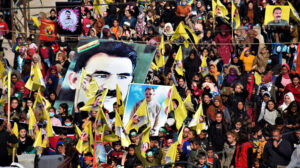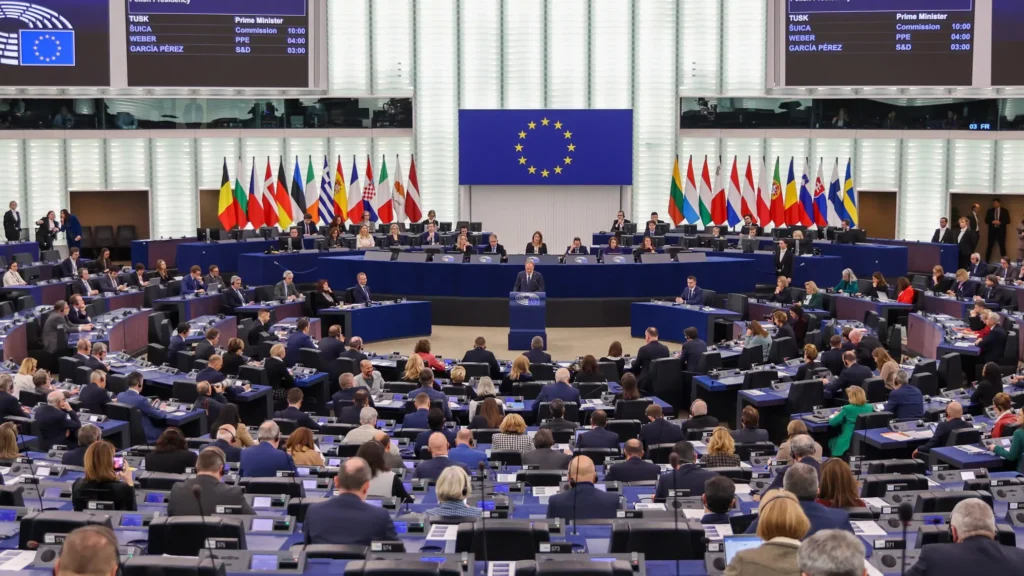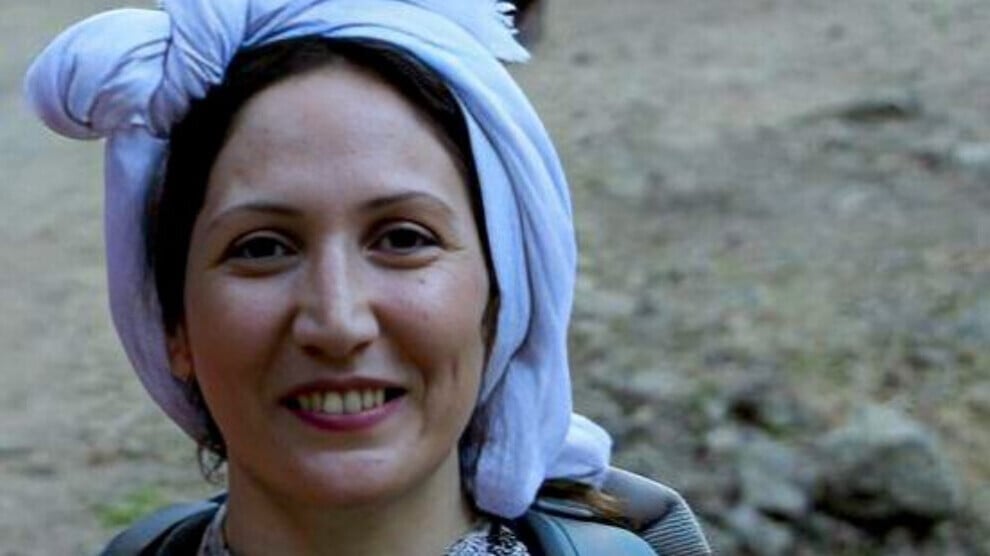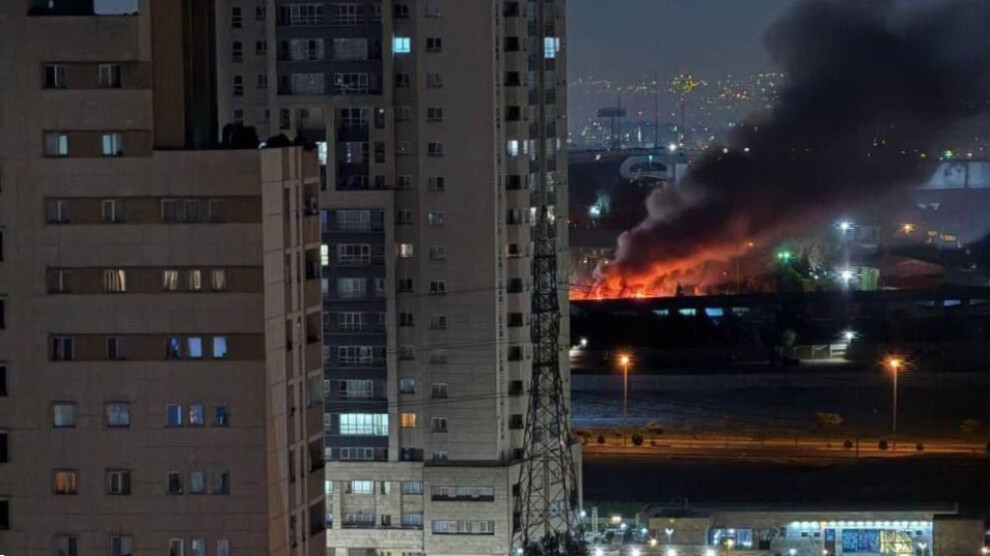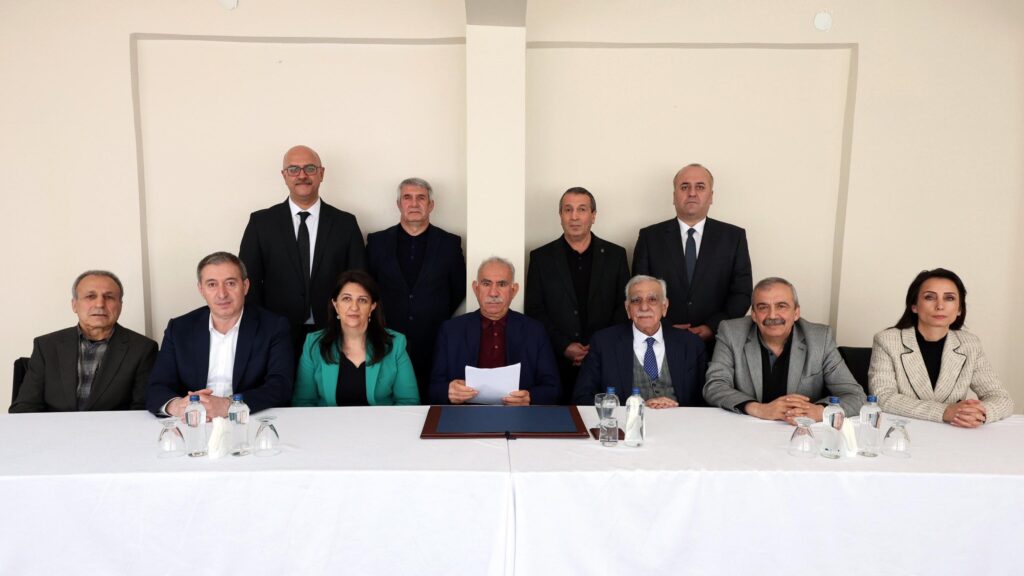The historical background of Rojhelat
Kurdistan was first robbed of its national unity by the Treaty of Qasre Shirin (also known as the Treaty of Zuhab) in 1639. Tis ended a decade and a half of war between the Ottoman Empire and the Safavid Empire, and divided Kurdistan into two parts. Tis division between the Ottoman Empire and the Safavid Empire, and its successors in present day Iran, continued through to the beginning of the 20th century.
The 20th century was a century of war and tribulation for Kurdistan and the Kurdish people. The First World War resulted in a series of arrangements between the imperial powers. The Sykes-Picot Agreement of 1916 was followed by the Treaty of Sèvres (10 August 1920) and the Treaty of Lausanne (24 July 1923). This final treaty discarded any concept of self-determination for the Kurdish people, and divided Kurdistan into four parts. The portion of Kurdistan previously controlled by the Ottoman Empire was divided between Turkey, Iraq, and Syria, while the Safavid-controlled portion became part of Iran. Tus, Kurdistan became an interstate-colony, with four new arbitrarily-defined states oppressing the Kurdish people and exploiting Kurdistan’s resources.
To understand the situation of Kurds in Iran, we will start with a closer look at Iran’s internal administrative system. Iran has a history of provincial administration, however, this was not established for the benefit of the diverse peoples of the state, but rather to enable strong rule by the central government. Today, Iran is divided into thirty-one provinces, with their boundaries drawn to serve political goals. Tus, although there is a province named Kurdistan, it includes only a small part of the Kurdish majority area that falls within Iran’s borders. East (Iranian) Kurdistan, also known in Kurdish as Rojhelat (the East), has been divided into five different provinces: West Azerbaijan, Kurdistan, Kirmaşan, Îlam, and Luristan. Tere are also substantial Kurdish populations in the provinces of North Khorasan and Razavi Khorasan in north-east Iran.
Each of these provinces has been targeted by a program of Persianisation (or Parsifcation). The Kurdish language, the people’s mother tongue, is not prohibited from public use; but it is labelled a “local language” and is only tolerated in general daily life. The term “Iranian” has become synonymous with “Persian”. Persian is the official language of the state across all regions and provinces, and Persians are placed at the center of Iranian society, while other peoples are regarded as peripheral.
The economic situation of East Kurdistan in all four parts of Kurdistan – in Iran, Turkey, Iraq and Syria – the economy has always had an agricultural base, albeit with varying degrees of importance. Fertile pastureland has endowed Kurdistan with unique natural wealth compared to other parts of the Middle East, and these lands continue to provide food for diverse livestock, while rivers support the growth of cereals.
Kurdistan is a strategically important location, with abundant natural resource, but the Kurdish people have derived no benefit. In 1908, oil was discovered, and along with the wider Middle East, the area became a focus of increasing interest from world powers – the United Kingdom, France, Germany and Russia.
Kurdistan’s fossil fuel reserves have been exploited by the various occupying regimes, bringing them great wealth, and mining has also become an important industry. According to Iran’s Ministry of Industry, Mine and Trade, 90 % of the nearly five hundred active mines in Kurdistan are owned by non-Kurds.
Despite all these natural riches, the Kurds have been lef under a blockade of sorts in their own land, as the following facts make clear:
1. The population of Rojhelat constitutes, according to various sources, around 17.5% of Iran’s population, while the Kurds’ share of the industrial processes is around 3%.
2. Oil and natural gas in Kurdistan account for 67% ment and relegated to live in poverty and social misery. Unemployment in Iran has usually been around 18%, though, as a consequence of the coronavirus pandemic and current US sanctions, it is currently much higher. The official rate in Kurdistan province in April 2019 (as given by the provincial governor to the Iranian Parliament) was 31%, and we can assume it is considerably more than this.
In Îlam, examining other social indicators, we can see that only 62,000 people (about 18% of the province’s population) are covered by government insurance. The rest of the population has nothing to fall back on.
The GDP of the Kurdish areas is substantially lower than that of other parts of Iran. At least 60 % of energy resources in Iraq, but the oil boom of 1970s was far from positive for the Kurdish region. The Iraqi regime purchased more sophisticated weapons to fight the Kurds, and, in 1975, the Baghdad government started its campaign to eliminate rural Kurdish areas, eventually destroying almost 4,000 villages.
3. Turkey saw the destruction of Kurdish villages and forced expulsions of the indigenous Kurdish populations near the oil fields of Siirt and Amed (Diyarbakir). These and other similar actions were always undertaken using the pretense of fighting “Kurdish separatism”.
4. The Syrian regime denied citizenship to more than 300,000 Kurds living near the oil fields of Qamishlo, a majority Kurdish city located in northeastern Syria.
There is no definitive statistical information regarding the Kurds in Iran. Any statistics that the Iranian government may have are kept as state secrets.
The territories that make up Rojhelat are among Iran’s poorest and least developed. Te tendency to- wards greater urbanization, as in other parts of the world, has led to the creation of big and crowded cities in Iran’s Kurdish provinces. Kurdish workers moving from rural to urban areas are mostly absorbed by the service sector, as there is little industry in these underdeveloped areas.
As a result, the service sector represents 54.1% of the economy of the urban areas of Kurdistan province (which we can use as a proxy for other Kurdish provinces within Iran), while the industrial sector accounts for only 4.9%. These figures clearly support the contention that the central government of Iran has intentionally paid minimal attention to the economic development of this part of the country.
Very little foreign investment comes into Rojhelat. Indeed, almost no foreign investment has been seen in the three Kurdish provinces of Kurdistan, Kirmaşan and Îlam over the last three decades. Of course, the economic deprivation in Kurdistan has occurred against a backdrop of nationwide financial crisis.
Historically, Iran has seen inflation far outpace GDP growth. From 1937 to 2010, inflation was high, averaging 12.69% per annum, while output growth averaged around 4.96%. A negative correlation coefficient of minus 0.39 between inflation and output growth over the full sample period indicates a serious structural problem in Iran’s economy.
The Iranian economy is characterized by general mismanagement and poor institutional arrangements for dealing with oil revenue volatility. It is heavily dominated by the state, who collect revenues from crude oil exports. The main economic players are shadow state actors, such as bonyads (foundations) and the commercial entities of the Islamic Revolutionary Guard Corp (IRGC), and their eco- nomic activities have crowded out the private sector almost since the establishment of the Islamic Republic of Iran in 1979.
Recent economic data shows that, by September 2018, Iran’s oil exports had fallen to 1.9 million barrels per day from a peak of 2.7 million per day in June 2018. By April 2019, they had dropped to 1 million barrels per day, and by October 2019, to just 260,000. The sanctions have cost Iran billions of dollars in revenues. These developments have caused an % 8 reduction in GPD this year, according to the IMF’s latest economic outlook for Iran. At the same time, the country is again experiencing very high inflation. According to the Central Bank of Iran, the inflation rate is 41%. According to the World Bank, inflation has been alarmingly high for food items, with the consumer price index for meat products rising by 116%. As the economy has moved into recession, the unemployment rate has soared, and some of the highest unemployment rates are found in the Kurdish provinces.
These three main macroeconomic indicators – negative economic growth, unprecedented inflation and very high unemployment – paint a dire picture of Iran’s economy. Across the entire country, Iranians are suffering, especially in recent years as the economic sanctions against Iran have taken hold.
Negative economic growth coupled with high inflation produces a state of stagflation, a situation that is difficult to change without accepting a lot of sacrifices in the future.
Even compared to the rest of the struggling country, the Kurdish provinces in Iran remain undeveloped and deliberately ignored by the state. The rates of unemployment and inflation are higher, and the economic contraction greater.
Unemployment and the social/ cultural conditions of the Kurds
Iran’s working population is presented with few opportunities and is often trapped in unemployment and relegated to live in poverty and social misery. Unemployment in Iran has usually been around 18%, though, as a consequence of the coronavirus pandemic and current US sanctions, it is currently much higher. The official rate in Kurdistan province in April 2019 (as given by the provincial governor to the Iranian Parliament) was 31%, and we can assume it is considerably more than this.
In Îlam, examining other social indicators, we can see that only 62,000 people (about 18% of the province’s population) are covered by government insurance. The rest of the population has nothing to fall back on.
The GDP of the Kurdish areas is substantially lower than that of other parts of Iran. At least 60 % of the population lives below the poverty line.
As a result of poverty and lack of opportunities, many Kurds travel hundreds of miles inside Iran to obtain short-season work or other temporary work.
Many people, called “kolber” in Kurdish, carry goods across the border to and from Iraq, and sometimes to Turkey, in order to make a living.
These kolbers include women, children from as young as ten, and sometimes people as old as 70. Because of the ongoing oppression and economic crisis, the number of kolbers is increasing, and included highly educated young people who have failed to find work in the public or private sectors. According to Iranian statistics, more than 20,000 people in Kurdistan province alone work as kolbers. They have no insurance, retirement plans, or unions, and much of their work is considered illegal by the regime.
The work of the kolbers is extremely dangerous. Many of them freeze to death or die from falling of mountains in the difficult border terrain. If detected by Iranian border guards, they are often shot on sight. Kolbers are killed on almost a daily basis, with troops on the border acting as judge, jury, and executioner. They act without knowing what the goods are that are being transported. According to Iranian law, it is illegal to engage in import and export of goods, as this is seen as a threat to the domestic economy and production.
It is also forbidden to import goods that are prohibited by the regime’s interpretation of Islamic law. Most of the goods being transported are neither a threat to the state nor illegal in the market, as argued by the Mullah regime. Available data shows growing numbers of killings, with 126 kolbers killed in 2015, 140 in 2016, 219 in 2017, and 231 in 2018. In 2019, 252 kolbers were killed in cold blood near Iran’s borders.
Iranian regime militarism and disregard for human rights
Rojhelat is completely militarized. Iran has deployed not only the regular Iranian army, but also many members of the Sepah Pasdaran (Islamic Revolutionary Guard Corp, IRGC) in the Kurdistan region. The military and IRGC exert control over the villages and the areas near Iran’s borders with Iraq and Turkey (i.e., other parts of Kurdistan), while the Ettela‘at, the intelligence agency, controls Kurdish cities.
At any one time, there are thousands of Kurdish political prisoners held in Iran. Most of these political prisoners are democratic activists who have attempted to address concerns such as human rights, women’s issues, environmental protection, child marriage, and workers’ conditions. All reports indicate that the people of the Kurdish region of Iran are overrepresented, compared to other Iranian citizens, in labor movements, student movements, women’s movements and other political movements, as the Kurds continue to endure extreme oppression at the hands of the Iranian regime. Human rights violations are commonplace, with Kurdish political activists facing torture, severe punishments, and, in many cases, the death penalty.
According to many reports from the UN Council for Human Rights and Amnesty International, the Iranian government has consistently been one of the world’s leading violators of human rights.
However, it is almost never mentioned that the Kurdish people of Iran are disproportionately targeted by the Iranian regime. A report from May 2018 stated that Iran was holding 200,000 prisoners within the country’s overcrowded prison system, and other reports stated that perhaps half of all political prisoners in Iran are Kurds. In 2015, according to Amnesty International, more than 997 people were executed in Iran, of which 45% were Kurds.
Kurds made up 43% of 567 executions in 2016, 48% of 531 executions in 2017, 55% of 277 executions in 2918 and 43% of 251 executions in 2019.
In addition to widespread arrests and frequent executions, the Islamic regime of Iran oppresses the Kurdish people by using its forces to impose their own radical interpretation of Islamic law.
Drug addiction and mental health crisis
Drug addiction is a serious problem among the Kurdish youth of Iran, with some reports indicating that drug use is higher in the Kurdish region than any other part of the country. Poverty and unemployment are key causes of this serious social issue. The Iranian regime purposefully takes no steps to address the drug problem in the Kurdish region. Rather, they allow it to proliferate to weaken the social fabric of the region and prevent the youth from mobilizing politically to demand their rights.
The Kurdish region of Iran is the site of an acute mental health crisis. According to estimates published in 2018, Iran‘s average suicide rate is 4.5 per hundred thousand, but this is much higher in the Kurdish region. The suicide rate in Îlam is 71.9 per hundred thousand, the highest in Iran, and likely one of the highest in the world.
Women’s issues
The Iranian Revolution of 1979 resulted in the overthrow of Shah Mohammed Reza Pahlavi and the replacement of his regime with the so called Islamic Republic led by Ayatollah Rouhollah Khomeini. Oppression increased, and the situation of the women of Iran immediately became much worse. Te oppression of women has intensified as the economic and social circumstances of the people have deteriorated. The women of minority ethnic groups, including Kurds, Baluchis, and Arabs, face particularly intense discrimination, being persecuted as women and deprived of social and economic justice, and also facing the denial of their national rights.
Discrimination against women is part of the foundation of the Islamic Republic, which proports to govern based on Shi’ite Islamic Law. Tis patriarchal oppression is institutional and structural, and has far-reaching negative consequences, including child marriages, family tragedies, suicide among the youth and children, tracking, sexual exploitation, and abuse. For example, according to the governor of Kurdistan province, in 2018, a total of 512 marriages involving children between the ages of twelve and often were registered in this province.
These policies have only aggravated public discontent and frustration with the regime and with clerical rule, and every few years anti-regime protests have erupted in Rojhelat, which are rarely covered by the international media. Even though they have been peaceful in character, the Islamic Revolutionary Guards Corps (IRGC), whose task it is to secure the Islamic Revolution from internal threats, have suppressed them violently. In the last waves of protest, which engulfed the whole of Iran, the Kurdish region had the highest rate of casualties.
Concerning political parties in the Kurdistan region of Iran
The history of political parties and organizations in Rojhelat is relatively young. The first Kurdish political organization that was established in that part of Kurdistan was in the city of Mehabad, where the Freedom Party of Kurdistan (Hizbî Azadî Kurdistan) existed from 1938 to 1941. The Freedom Party was a pro-democracy, anti-fascist party, but without a clear national agenda. The party had very little influence on Kurdish politics as it dissolved after a short while.
The Society for the Resurrection of Kurdistan (Komeley Jiyanewey Kurdistan, JK) gave a fresh start to Kurdish liberation nationalism. This organization, which existed from 1941 to 1945, consisted primarily of middle-class intellectuals who promoted national consciousness and the idea of an independent Kurdistan. JK soon “transformed” into a new political party, the Democratic Party of Kurdistan (Hizbî Demokratî Kurdistan, PDK). The PDK, established in 1945, is now the oldest political party in Rojhelat. The president of the PDK was Qazi Muhammad, who declared the establishment of the short lived Republic of Kurdistan, on 22 January 1946, in the city of Mehabad. Tis first ever Kurdish republic attracted Kurds from other parts of Kurdistan. Later, PDK split into two separate organizations with similar ideology but different leadership: the PDK (Democratic Party of Kurdistan) and the KDPI (Democratic Party of Iranian Kurdistan).
Komala (Komeley Şorişgêrî Zehmetkêşanî Kurdi- stanî Êran – the Society of Revolutionary Toilers of Iranian Kurdistan) was formed in 1969 by a group of Kurdish student activists as a leftist/socialist organization. In recent decades, they have been engaged, alongside the PDKI/PDK, in guerrilla warfare against the Islamic Republic of Iran. The legendary Kurdish activist, Foad Mustafa Soultani, was one of the cofounders of this movement. Today, there are at least four different groups bearing the name Komala, with different political programs.
These groups include Komeley Şorişgêrî Zehmetkêşanî Kurdistanî Êran, Komeley Zehmetkêşanî Kurdistan (Society of Kurdistan Toilers), Komeley Rewtî Sosyalist (the Socialist Path Komala), and Komala Sazmanî Kurdistanî Hizbî Komunistî Êran (the Kurdistan Association of the Communist Party of Iran), a political branch of the Iranian Communist Party.
The Kurdistan Free Life Party (Partiya Jîyana Azad a Kurdistanê, PJAK), established in 2004, is now one of the most prominent political parties working to secure the democratic and national rights of the Kurdish people in Iran. The PJAK, is a member of the KODAR, the Democratic and Free Society of Eastern Kurdistan (Komalgeha Demokratîk û Azad a Rojhelatê Kurdistan), an umbrella organization that struggles for democratic confederalism and a democratic peoples’ republic in Iran. The East Kurdistan Units (Yekîneyên Rojhelatê Kurdistanê, YRK), are the autonomous self-defense forces in the Kurdistan region in Iran that follow the strategy of the KODAR. The PJAK, the KODAR, and the YRK place great emphasis on multi-ethnic coexistence and gender equality, and women play a leading role in the management of these organizations.
Khebat, Kurdish for “struggle” (Sazmani Xebatî Kurdistanî Êran – the Organization of Rojhelat Struggle) is an Islamist party that was established by Sheikh Jalal Hosseini. Tis later split into two organizations: Sazmani Xebatî Kurdistanî Êran and Rekxirawî Xebatî Shoreshgerî Kurdistan (the Kurdi- stan Revolutionary Struggle Organization).
In total, there are more than a dozen political parties and organizations that struggle for the rights of the Kurds of Rojhelat, among them, besides those already mentioned, are the Freedom Party of Kurdistan (Partî Azadî Kurdistan, PAK), the Kurdistan Independence Party (Partî Serbestî Kurdistan), The East Kurdistan Independence Party (Partî Serbestî Rojhelatî Kurdistan), The Independent Kurdistan Party (Partî Serbexoyî Kurdistan), and the East Kurdistan Republican Movement (Bizutnewey Ko- marîxwazî Rojhelatî Kurdistan).
Kurdish political organizations demand a peaceful and democratic solution of the Kurdish issue, to be achieved via dialogue and negotiation with the central regime. Most of them demand a true decentralization and democratization of Iran. While a couple of these parties call for an independent Kurdistan, the Kurdistan Free Life Party (PJAK) advocates for a democratic confederal Iran with a radical emancipation of women. This would be similar to the system being promoted by the Autonomous Administration of North East Syria, which is proving itself to be the most viable solution to the crises that have engulfed the Middle East.
The Iranian regime has denied the existence of the Kurdish issue, and has continued its policy of political oppression and cultural assimilation. In their determination to solve the problem via dialogue, the Kurdish political parties have lost some of their most charismatic leaders. In 1989, the General Secretary of the Democratic Party Iranian Kurdistan (PDK-I), Abdul Rahman Ghassemlou, was assassinated in Vienna by the Iranian “diplomats” at the negotiating table. Tree years later, Iranian agents assassinated three more Kurdish leaders in Berlin in what came to be known as “the Mykonos restaurant assassination”. The German Court ruled that the assassination had been directly ordered by top Iranian politicians.
The environment
The Iranian government has undertaken many so called “development projects” that have had detrimental effects on Kurdistan and the Kurdish people. These projects usually lie outside the Kurdish region, but are fed by Kurdish water and mineral resources. The government has changed the direction of rivers to divert them to other parts of Iran, causing droughts and water crises in the Kurdish areas.
These tactics are similar to those long-used by the Turkish government in the Kurdistan region of Turkey, such as the Turkish government’s Southeastern Anatolia Project (Güneydoğu Anadolu Projesi, GAP), which is one of the largest and most controversial dam projects worldwide, and has had the effect of putting thousands of years of Kurdish historical and cultural heritage under water.
Kurdish environmentalists have shown that the Iranian regime’s policies, (such as dam construction and water diversion) both destroy the region’s eco-systems, and, through the uncompensated exploitation of its natural resources, exacerbate economic issues in an area already suffering from severe underdevelopment.
Additionally, and again like the Turkish government, the Iranian regime deliberately burns areas of the Kurdistan countryside during the summer, kil- ling animals, causing great damage to forests, fields, and agricultural lands, and rendering these places uninhabitable. Many Kurdish volunteer freighters have died attempting to bring these freights under control.
Iran’s broad regional anti-Kurdish policies
Iran’s anti-Kurdish policies reach far beyond the country’s borders. The Iranian regime has long been the closest regional ally of Syria’s now-embattled Assad family dictatorship, with a relationship that far predates the reign of Bashar al-Assad. Iran places great value on maintaining the Assad regime, and has devoted significant resources to protecting Assad and preventing any sort of transition to democracy in Syria. And they stand strongly against any recognition for the Kurdish people of Syria.
The idea of “transporting the revolution” constitutes one of the major pillars of the Islamic Revolution of 1979, and the clerical regime has given it their wholehearted commitment. Accordingly, the Islamic Revolution Guard Corps (IRGC), and especially its external branch, the Quds Corps, is tasked with igniting a similar Shiite revolution in the Middle East so as to preserve the Shiite revolution at home. This project underlies the Iranian interference in neighboring countries, such as Lebanon, Syria, Iraq and Yemen. It has not only angered the Iranian populations, for the billions of dollars spent on this project that could have been invested in Iran, but has also threatened the Sunnis populations across the Middle East who do not want to see a Shiite revolution in their own countries. In consequence, some Sunni people have embraced radical Sunni groups such as Al-Qaida and ISIS as a way to protect themselves from a Shiite revolution.
At the same time, Iran coordinates directly with the Turkish state to fight the Kurds in all parts of Kurdistan. While the Turkish government’s relationships with most Arab countries are now frayed, Erdogan and his AKP-MHP government have made common cause with the Iranian regime as they have worked together militarily and otherwise to attack the Kurds. Indeed, the Turkish state’s relatively isolated position relative to the Arab world has prompted even closer cooperation with Iran.
Since the Kurds became a visible power in the Middle East, and particularly with their propagation of the concept of democratic autonomy within existing borders in Syria, many Arab countries have come to recognize the Kurdish reality. Indeed, Turkey’s various campaigns of military aggression, invasion, and occupation in Syria and Iraq have demonstrated that it is Turkey, and not the Kurds, that actively seeks to change the region’s borders.
Turkey and Iran are historic rivals, and their current alliance is tactical. Turkey aspires to be the head of the international Sunni Muslim community, but cooperates with Iran, a Shi’ite Islamist theocracy that sponsors Shi’ite militant groups throughout the region. A dedicated anti-Kurdish approach unites these two regimes.
Since the beginning of this year, Turkish airstrikes have attacked Kurdish freedom fighters in the border regions of Iraq and Iran. At the same time, Iran has increased their attacks against Kurdish fighters inside Iraq. In Iran, there are around 12 million Kurds, the majority of whom share the aims of the Kurdistan Free Life Party (PJAK). Turkey is now attacking the PJAK on behalf of Iran. The Iranian regime is not able to declare a direct war against the Kurds since Tehran is involved in many other conflicts. In fact, an open war against the Kurds is one of Iran’s biggest fears, because the Kurds have more diplomatic and political options than they do, and Kurdish forces would launch defensive actions against military positions inside Iran, which would create turmoil for the regime. Nonetheless, Iran continues to perpetrate attacks against Kurdish groups and engage in assassinations and psychological warfare, including issuing death threats against Kurdish activists.
Conclusion
The issue of Eastern Kurdistan is an important component of the Kurdistan question as a whole, and is a result of the denial of the existence of the Kurdish people and a total disregard for their will. Tus, the issue can only be properly addressed by officially acknowledging Kurdish existence, guaranteeing and protecting Kurdish rights, and recognizing Kurdish will. Efforts at democratization can have positive effects on the Kurdish issue, and a peaceful democratic solution of the Kurdish question can help bring peace, stability and prosperity to the wider region.
December 10, 2020
